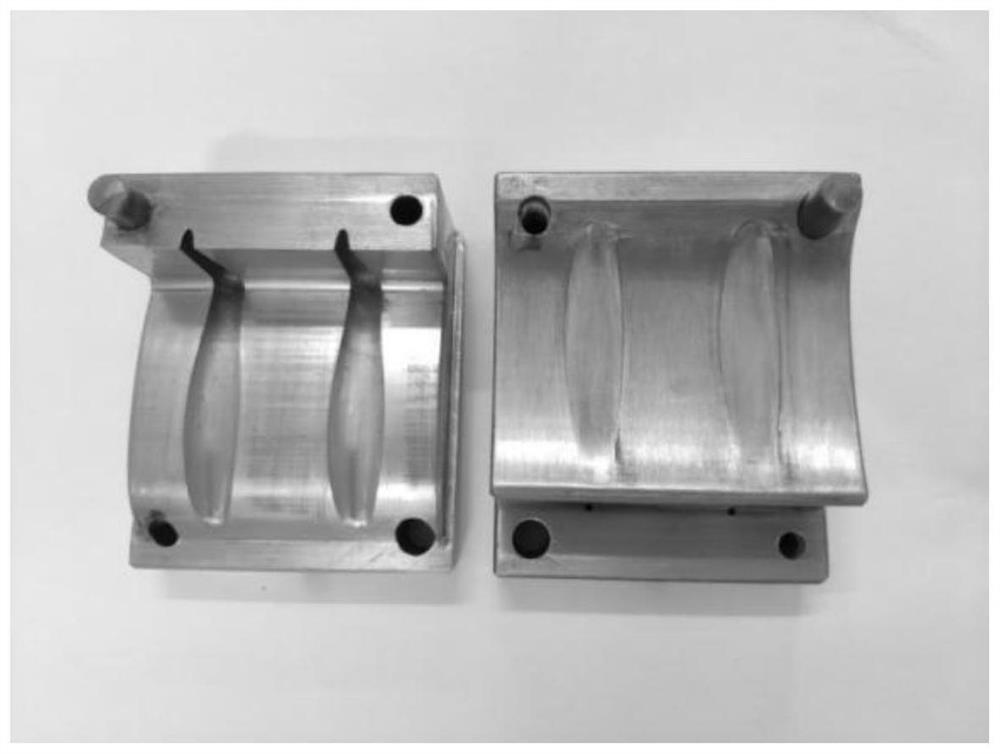Silica gel rhinoplasty material compounded with decalcified bone matrix
A technology of demineralized bone matrix and demineralized bone, applied in medical science, prosthesis, etc., can solve the problems of irregular shape, limited use and promotion, difficult to remove prosthesis, etc., to reduce the occurrence of complications and easy to degrade. , good biocompatibility
- Summary
- Abstract
- Description
- Claims
- Application Information
AI Technical Summary
Problems solved by technology
Method used
Image
Examples
Embodiment 1
[0028] Human decalcified bone meal (DBM, less than 150 microns) was selected to be compounded with silica gel in different mass ratios, and it was found that when the mass content of DBM reached 60%, it could not be bonded ( figure 1 ), adding Suo aloe vera gel and konjac gum (mass ratio 1:1), when the DBM mass content reaches 70%, it cannot be bonded, so the DBM accounts for less than 60% of the total mass in the subsequent composite material prepared later.
[0029] Composite materials with different DBM mass ratios of 0%, 10%, 20%, 25%, and 40% were prepared respectively:
[0030] Weigh 1.8g of silica gel, add 0.1g of calcium phosphate bone cement and stir evenly, raise the temperature to 70°C, add 0.05g of aloe vera gel and 0.05g of konjac gum, stir and mix evenly; add it into a 24-well plate and solidify at 70°C for 2 hours to obtain Composite 1 with 0% DBM content.
[0031] Weigh 1.6g of silica gel, add 0.2g of decalcified bone powder (less than 150 microns), stir well,...
Embodiment 2
[0040] The cytocompatibility of each group of composite materials in Example 1 was evaluated by using L929 cells. Take the sample of Example 1 and add it to the culture medium at a ratio of 0.2g / 1ml, and extract at 37°C for 24 hours to obtain an extract. Take normal cultured L929 cells and adjust the cell density to 2×10 4 / ml, inoculated into a 96-well culture plate, cultivated for 24 hours, discarded the original medium, and added the corresponding extract; after 72 hours, discarded the original medium, added 100ul of medium containing 10% CCK8 to each well, and after 30min The absorbance was detected at a wavelength of 450nm, and the growth state of the cells in the sample group and the relative proliferation rate of the cells were calculated (the control group was the medium without adding the extract).
[0041] The relative value-added rate results of the cells of composite materials 1-5 and comparative materials 1-3 are shown in Table 1:
[0042] Table 1
[0043]
Embodiment 3
[0044] Example 3 Safety of composite material implanted in vivo
[0045] Twelve male SD rats were selected. Before the test, the hairs on both sides of the rat’s spine were cut off. During the test, they were anesthetized by intravenous injection of pentobarbital sodium. Four implantation points were selected equidistantly at about 2.5 cm from the side, and each point was spaced 2.5 cm apart, and four materials with a mass content of DBM of 0%, 10%, 20%, and 40% were implanted into the subcutaneous tissue. The samples were collected at 6 months and 12 months respectively, and histological staining was used to observe the material degradation, inflammation, and adhesion to the surrounding tissues of the material. The results proved that the composite materials in each group were implanted safely, without degradation and inflammation.
PUM
| Property | Measurement | Unit |
|---|---|---|
| Particle size | aaaaa | aaaaa |
Abstract
Description
Claims
Application Information
 Login to View More
Login to View More - R&D Engineer
- R&D Manager
- IP Professional
- Industry Leading Data Capabilities
- Powerful AI technology
- Patent DNA Extraction
Browse by: Latest US Patents, China's latest patents, Technical Efficacy Thesaurus, Application Domain, Technology Topic, Popular Technical Reports.
© 2024 PatSnap. All rights reserved.Legal|Privacy policy|Modern Slavery Act Transparency Statement|Sitemap|About US| Contact US: help@patsnap.com










